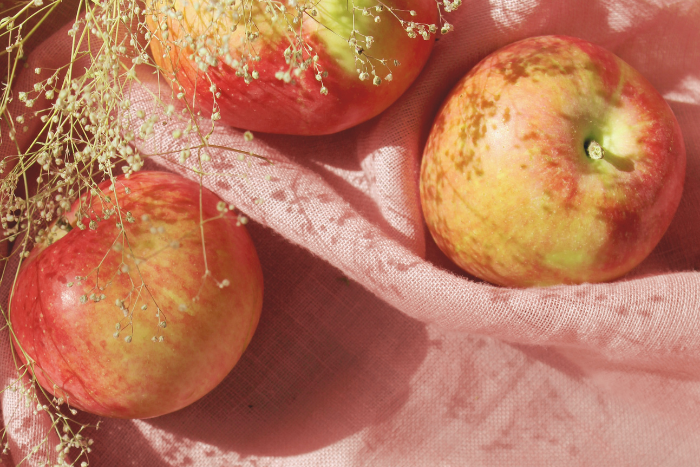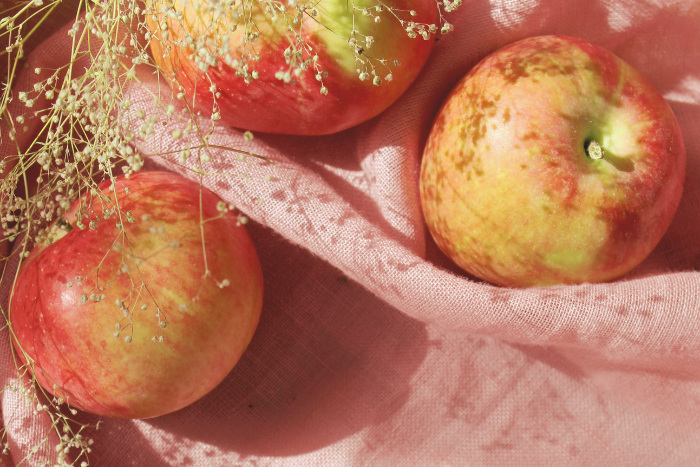While it may be natural to assume that issues of excess cold can only afflict the body during the winter months, this is not the case. Internal cold can accumulate in the body for a number of reasons besides cold weather, including illness, menstruation, and yang-deficient body constitutions. If you suffer from excess cold, you may notice poor circulation in your hands and feet, weak digestion, poor concentration, sluggishness, exhaustion, and depression. One simple treatment for these symptoms is altering your diet by eating foods that will bring warmth back into your body. Stay tuned to learn about the most popular foods for warming in Traditional Chinese Medicine.
Fruits for Warming
Chinese dates, also known as jujubes, are sweet, warming fruits. They are known to target the spleen and stomach organs in particular, meaning that they aid digestion and the flow of blood and fluids through the body. Chinese dates are often consumed raw or dried, and they can be easily incorporated into teas as well.
Raspberries are another fruit with warming properties. These sweet and sour berries aid the functioning of the bladder, kidneys, and liver. Ultimately, raspberries contribute to the smooth flow of bodily fluids and the flushing out of body toxins.
Peaches are known in TCM for their ability to tonify yin, promote qi and blood circulation, and dispel cold. Peaches are especially beneficial to the stomach and intestinal tract and will aid with the digestion issues that arise from excessive cold.
Some other examples of warming fruits are cherries, hawthorne berries, lychees, and coconuts.
Vegetables for Warming
Chives have a pungent taste and are known in TCM to tonify yang deficiencies. Chives target the kidneys and the liver, helping to regulate the flow of qi and bodily fluids throughout the body. Chives can be easily chopped up and incorporated into savory dishes for added flavor and health benefits.
Winter squashes — such as butternut squash and pumpkins — come with numerous benefits. These squashes are known to tonify qi, regulate blood circulation, expel cold, resolve dampness, and resolve phlegm. They are associated with the lungs, stomach, spleen, and large intestine. Eating winter squashes will not only relieve symptoms of excess cold, but will also undoubtedly bring numerous other health benefits, as well.
Green onions, a popular ingredient in Chinese dishes, are one of the most popular herbs in TCM for expelling cold and wind. In addition, green onions also help eliminate toxins and reduce swelling. Beyond consuming green onions in food, green onions can even be applied as a paste to the chest, back, and hands to treat common cold symptoms.
For more warming vegetables, try leeks, mustard greens, and bell peppers.
Meats
Chicken is warm in nature and has properties that help in circulating blood and dispersing cold. In TCM theory, chicken enters the spleen and stomach organs, and thus helps the circulation and digestion issues that are experienced with excess cold in the body. Chicken can be cooked in a number of ways and can be mixed with other warming ingredients to maximize the TCM benefits.
Lamb is hot in temperature and is one of the best foods to eat during the winter. Lamb warms the stomach, promotes blood circulation, and energizes the flow of qi. Lamb can be eaten alone or cooked into a stew for a hearty, warming meal.
Shrimp and prawn also have warming properties and are known for their ability to tonify qi and yang, regulate blood circulation, dispel cold, and relieve phlegm. Shrimp and prawn can be consumed alone, cooked with vegetables, or added to congee or soup.
Other meats that are known to be warming include venison, trout, and beef.
Spices
Garlic is hot in nature, making it effective for tonifying yang. Garlic also helps promote qi circulation, eliminate toxins, disperse wind and damp, and resolve phlegm. It is associated with the lungs, spleen, stomach, heart, and liver. Garlic is a staple in Chinese dishes and will bring both health benefits and delicious taste to your diet.
Cinnamon - Pungent spices like cinnamon have the ability to promote the circulation of qi and bodily fluids. Cinnamon is not just warming, but tasty as well. Try adding it to a tea or dessert for a burst of flavor and warmth.
Ginger, another staple in Chinese cuisine, also has warming properties. This sweet and pungent root promotes qi circulation, resolves phlegm, and is particularly useful for dispelling wind-cold. Ginger is often added to food dishes as a spice and brewed into teas, as well.
Spice up your diet with other warming spices like chili, black pepper, and tumeric.
Incorporating warming foods into your diet can be a transformative step towards alleviating the symptoms of excess cold and promoting a healthy flow of blood and vital energy. By embracing the power of warming foods, you can restore balance, enhance digestion, and rejuvenate your body from within.


